
Frostpunk 2 was provided by 11 Bit Studios for review. Thank you!
When it comes to city builders, I find a lot of them to be fairly similar. It's not to say that they are bad; I usually love them regardless, but the gameplay and my strategy to succeed tend to stay the same. There are differences here and there, but it largely stays the same overall. Frostpunk 2 was nothing like other city-builders I have played, not including Frostpunk 1. The layers of gameplay mechanics that all mold within each other create a wholly unique experience that is not only a blast to play.
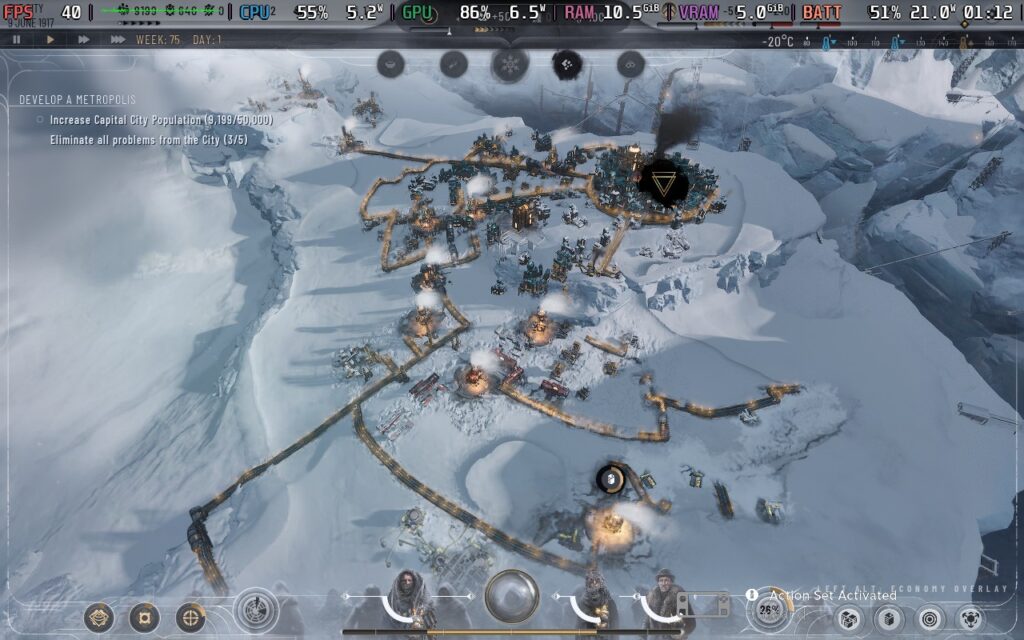
In Frostpunk 2, the world has been encased in an ice age that is getting colder and colder, and your job is to manage your city to survive the harshest winters. You start out with a core generator, which provides heat to your people, and from there, you have to expand. This is done by placing a district down on a specific number of tiles, providing you with some benefits like housing for your population, food, or extracting materials from the ground. You will have to balance the districts and resources to make sure you get enough, all while conserving heat and staving off bad effects like disease and crime.
Balancing and providing all the resources your people need is at the core of the game, and everything else you will do is focus on how to improve the yield and get more resources without the consequences of those actions building up too much. The districts directly provide the resources, with housing being the only one that can be placed anywhere and the others needing resource nodes on the map. To access these, you need to break the frost on the ground and then choose six tiles to build a District on. They will automatically start to collect the resources there while draining heat from the generator, which other resources can replenish.
Then, we have a multitude of elements that can affect this resource collection. In your city, there are different factions of people, all of whom have different desires for how the city will run, and as you play, you will be able to court their trust or break it. The more trust you have, the more benefits you can receive, like a bigger workforce to continue building new districts and buildings, while a lack of trust can disrupt your resources. There will also be small prompts throughout the game that give you some insight into how these factions feel about the decisions you make and give you choices that can affect your resources or trust in them.
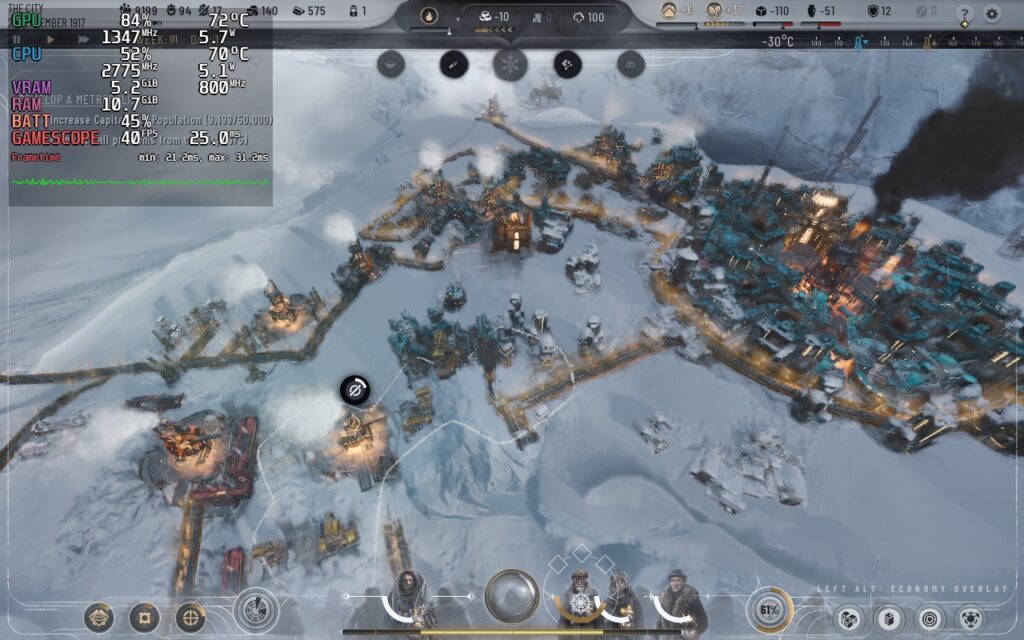
We can also create new buildings within these districts as we expand them, which will have both positive and negative effects (more food but more disease risk as well), build hubs to increase stockpiles of resources and propose new laws at the Council. Courting the factions to trust you is essential to getting the votes for the laws you want to pass, and you may have to win them over by promising to support them by enacting a law of their choice or giving them money later on.
To get new buildings and new laws that you can enact, you will have to research them. This costs money but will unlock upgrades, new buildings, and laws that will really help you further as everything gets colder and the demands of the factions increase. These upgrades are also sectioned into different aspects it can improve, like resources and heat, and they all have some benefits. Choosing which one to research first, depending on your area and available resources, is essential and changes with each map.
Utilizing all of these effectively will help balance out and give you a prosperous city, and it is so much fun to do. The way each layer of gameplay, each of these elements, interacts with each other feels so fluid and enjoyable. It is pretty addicting to find the best ways to combine everything to create the best possible city with balanced resources and trust with the factions. There isn't a part of the game that feels out of place; every mechanic matters, and it is wonderful.

My only worry is the sheer amount of information that appears on the screen throughout the game. There is so much to take in, from how each law, building, and research can affect everything else, to the little story or event blips that pop up throughout. It can feel overwhelming at times, and while it is a little better on bigger screens, it still feels like too much at times and a lot of information to remember.
You can also expand and find resources around the wasteland. You will send expeditions out to survey parts of the world to find new resources to bring back to your city, which will be exponentially more helpful later on in the game as you need to expand once resource nodes deplete or you want to stock up on resources for the harsher wintertime. You can also find areas where you can build another colony and use it to trade resources between your towns. Each spot has its own challenges, but I love how you can coordinate this way.
There are two game modes to play in Frostpunk 2. We have a story mode, which is a great way to really dive into the mechanics and tell an interesting story of trying to rebuild, and Utopia Builder, which is more like an endless sandbox-esque city-building mode. Both are very replayable and although the story mode is more linear, it can be more malleable than expected. Utopia Builder has you choose a starting location with the goal of building the best city you possibly can and surviving the Winter while advancing far enough.
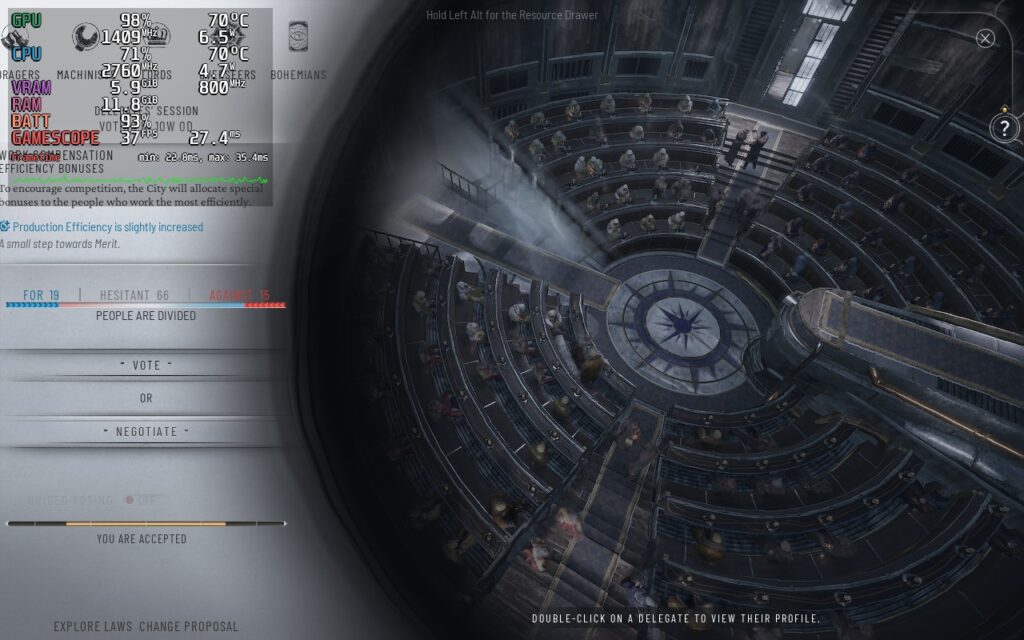
There's something about the game that the visuals just end up making me want to keep expanding and play more. The white snowy apocalypse feels all the more inviting, and building districts are all color-coded nicely, so I can tell each one apart. It also makes looking at an overview of my cities and colonies more amusing. The UI does the job for the most part, but I did wish there was an easier way to bring up resource node icons. There were times I was moving around and just wanted to see the nodes, but I couldn't find an easy way to bring them up without going into my build menu. It's a small issue, but it would have been nice if it had been corrected.
And then we have Frostpunk 2 on the Steam Deck, which I actually enjoyed more than not.
Frostpunk 2 is a little messy to play on the Steam Deck, but ultimately, I did enjoy it. There is no controller support, but there is a solid layout that was created to help. I ended up using the trackpad as a mouse most of the time, but some of the shortcuts there really do make it more playable. Regardless, performance is a bit tough on the device, and although it will need compromises (and upscaling), it is ultimately playable with one caveat.
With everything on low and TSR upscaling at Ultra Performance, the game can stick to 40 FPS pretty nicely, but I preferred 30. I did try changing the settings around a bit and making them higher, but it also caused higher RAM usage and led to a crash. It may still ultimately happen as you expand, but it will take longer. The game does have auto-save, just in case, but the RAM usage being so high as you expand is a bit concerning. CryoUtilities with the swap files may help mitigate these crashes, but there may be stutters.
Oddly enough, the part of the game that dropped more often than not was actually at the council screen, but with everything at a standstill at this screen, it doesn't matter too much.
FSR and XeSS can also be used instead of TSR, but I found that TSR looked the best, and the other two didn't necessarily provide enough of a boost to performance. TSR keeps the game looking pretty decent, and everything was quite visible and decent-looking. The text size was a little small in some UI elements, but I didn't find anything to be unreadable. You can increase the size of the UI text scale in settings, but some parts are still a little small:
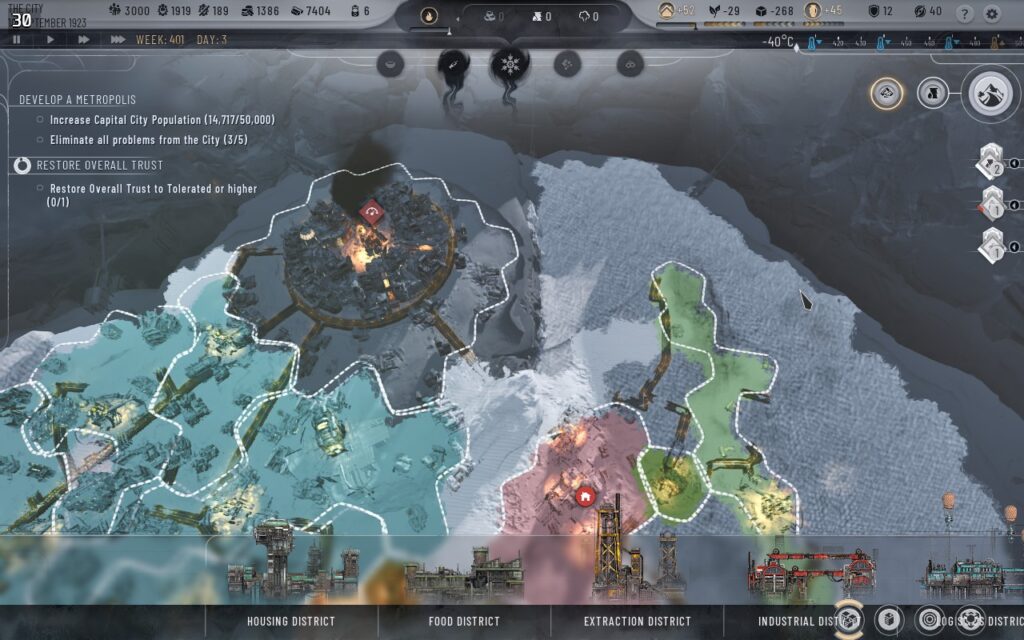
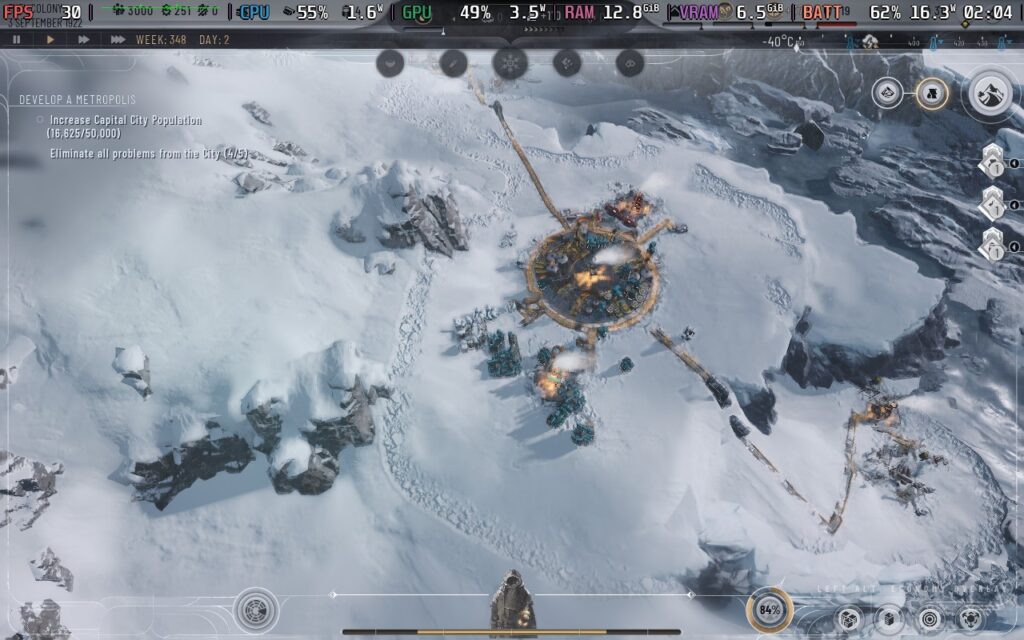
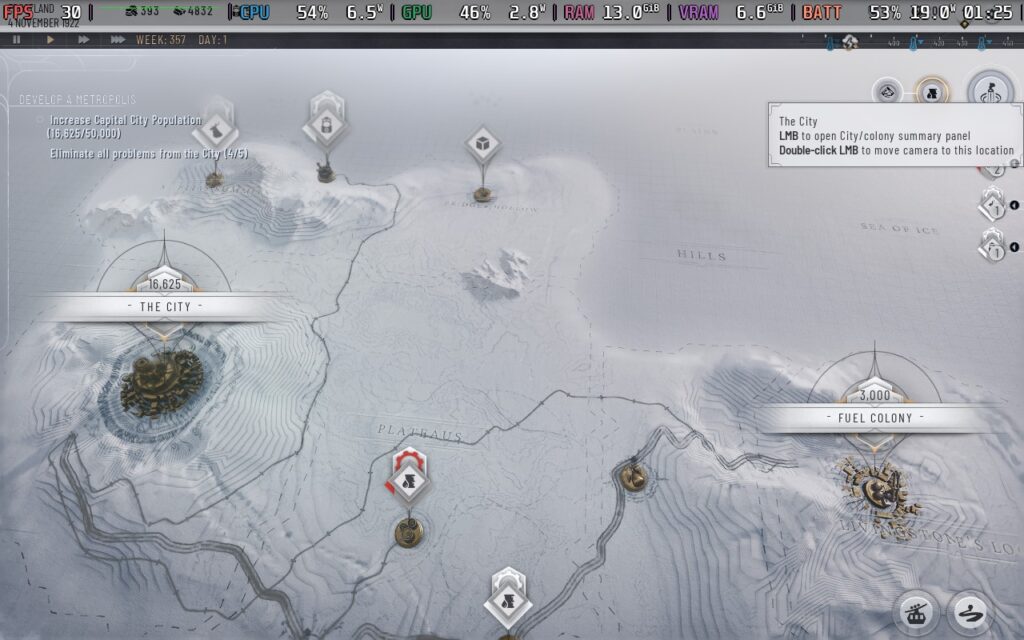
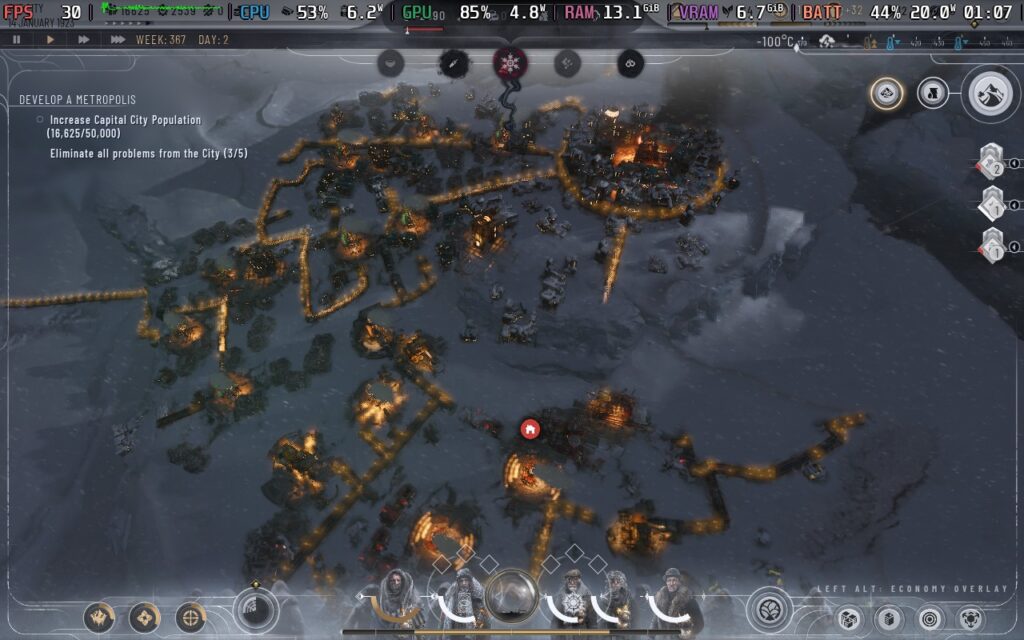
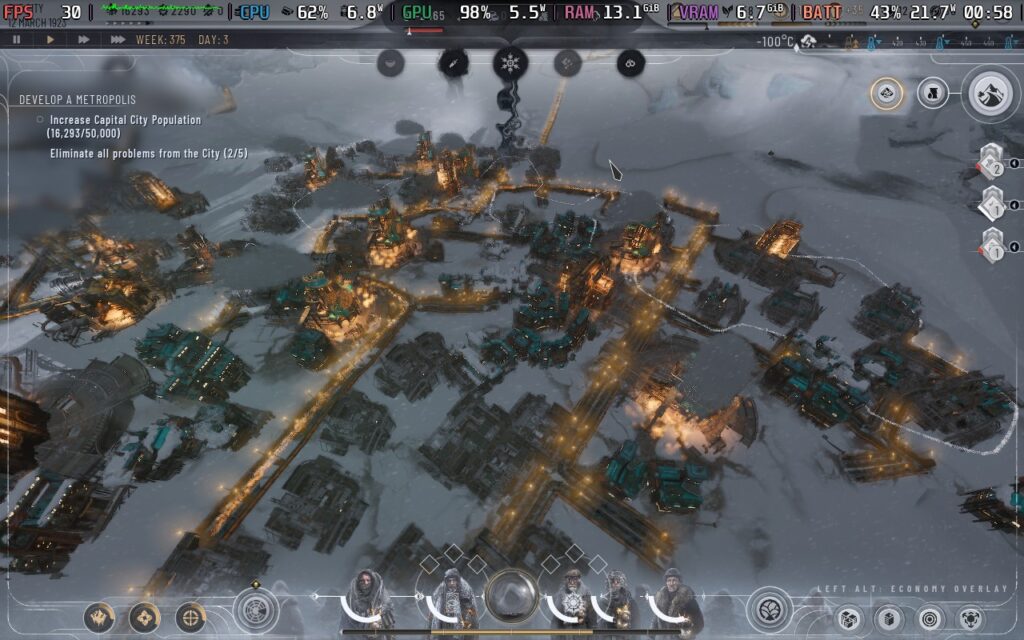
For Frostpunk 2, I would love to see future patches addressing the RAM usage and maybe even gamepad support. If they can take care of those, this would be an easy recommendation for city-builder fans. It does also seem like some of the UI gets cut off when at the building screen, but this doesn't actually stop you from selecting anything.
As for settings, we can change the temperature unit from Celsius to Fahrenheit, toggle tutorial and resetting game speed when entering certain scenarios, putting the UI in dark mode, changing audio sliders, remapping keys, changing languages, and even Twitch integration!
The game does support 16:10 resolutions and does have cloud saves, but there is no controller support. There are no HDR settings.
In the time I played Frostpunk 2, it became my go-to city builder. I love the post-apocalyptic theme, and it is very replayable, but the fact that every single element in the game has some importance to it made me feel like I had to utilize everything at my disposal to really keep my people happy. It is a lot of information at times, and there are some UI elements I would have wanted to see more often, but it is small in the grand scheme and is just such a fun game to play.
It is a bit harder to run on the Steam Deck, and the RAM creeping up is a little concerning, but this is still wonderful to play on the Deck. I hope that future patches can help it perform a bit better with gamepad support and lower RAM usage, but I am happy overall!
Our review is based on the PC version of this game.
If you enjoyed this review, be sure to check out the rest of the content on SteamDeckHQ! We have a wide variety of game reviews and news that are sure to help your gaming experience. Whether you're looking for news, tips and tutorials, game settings and reviews, or just want to stay up-to-date on the latest trends, we've got your back.
Frostpunk 2 has become my favorite city-builder thanks to its fantastic gameplay and great setting, and it is technically playable on the Steam Deck.

No Forced Compatibility
Upscaling: TSR
Upscaling Quality: Ultra Performance
Textures: Medium
Everything Else at Very Low